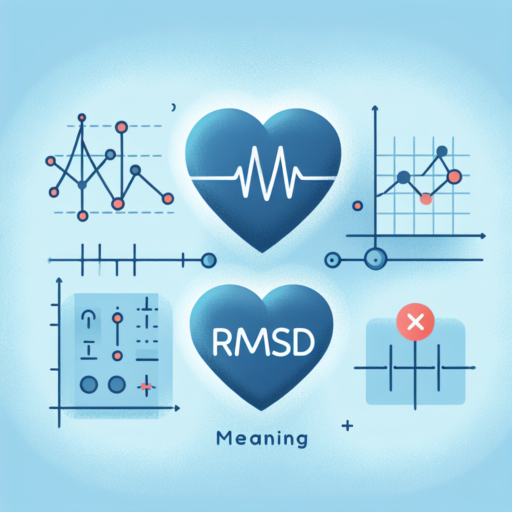What is a Chest Monitor and How Does It Work?
A chest monitor, often referred to as a cardiac monitor, is a sophisticated piece of medical technology designed to continuously observe the electrical activity of the heart. By attaching electrodes to the skin of the chest, these devices can track heart rate, rhythm, and other vital signs, providing essential information for diagnosis and monitoring in real-time. This capability makes them indispensable tools in managing heart-related conditions, both in clinical settings and during personal use for those with chronic heart issues.
The operation of a chest monitor involves a systematic process. Initially, sensors called electrodes are strategically placed on specific areas of the chest. Once activated, these sensors pick up electrical signals generated by the beating of the heart. The data collected is then transmitted, often wirelessly, to a receiver or monitoring device. This receiver interprets the electrical signals into understandable graphs or numerical values, allowing healthcare providers to make informed decisions about the patient’s cardiac health.
Furthermore, advanced models of chest monitors can include features such as Bluetooth connectivity and integrated software applications. These enhancements not only improve the ease of use but also extend the monitor’s functionality. For instance, real-time data can be shared with healthcare providers remotely, enabling timely interventions and adjustments to treatment plans without the need for a physical consultation. Additionally, these devices often come with algorithms capable of detecting irregular patterns and abnormal heartbeats, alerting both patients and doctors to potential health issues that may require immediate attention.
Top Benefits of Using a Chest Monitor for Your Workouts
Tracking the intensity and efficiency of your workouts can lead to significant improvements in your physical health and performance. One of the most effective tools for monitoring your exercise routine is a chest monitor. These devices offer a closer, more accurate reading of your heart rate compared to wrist-worn fitness trackers. Below, we dive into the major advantages of incorporating a chest monitor into your exercise regimen.
Enhanced Accuracy
One of the primary benefits of using a chest monitor is its enhanced accuracy. Chest monitors measure electrical signals from the heart to provide real-time data on your heart rate. This method is closer to the one used by medical-grade heart rate monitors, offering users precise heart rate readings. This accuracy is particularly beneficial during high-intensity workouts or interval training, where heart rate is a critical measure of performance and effort.
Comfort and Convenience
Despite what one might assume, modern chest monitors are designed with comfort and convenience in mind. Made from soft, flexible materials, they can be easily adjusted to fit snugly around your chest without causing irritation or discomfort during workouts. Furthermore, once positioned, chest monitors stay firmly in place, allowing you to move freely and focus on your exercise without worrying about slippage or inaccurate readings.
Real-Time Feedback for Training Optimization
Having access to real-time data allows for immediate adjustments in your training intensity, enabling a more tailored and effective workout. This instant feedback can be crucial for athletes looking to stay within specific heart rate zones. By utilizing a chest monitor, you’re empowered to make data-driven decisions about your pace and exertion, optimizing every session to meet your fitness goals more efficiently.
How to Choose the Right Chest Monitor for Your Fitness Needs
When selecting the ideal chest monitor for tracking your fitness progress, understanding your specific needs and goals is critical. Chest monitors, known for their accuracy in heart rate measurement, are indispensable tools for fitness enthusiasts aiming to optimize their workout sessions. Whether you’re a professional athlete or a fitness beginner, identifying the features that align with your exercise regimen will enhance your training efficiency and motivation.
Consider Your Workout Intensity
Analyzing the intensity of your workouts is a fundamental step in choosing an appropriate chest monitor. If your training sessions include high-intensity interval training (HIIT) or endurance activities, look for a chest monitor that not only tracks heart rate with precision but also offers robust connectivity to other devices and apps. This ensures that all your workout data is accurately recorded and easily accessible, enabling you to adjust your training plans accordingly.
Compatibility and Connectivity
In today’s technology-driven world, the ability of your chest monitor to seamlessly connect with other devices is a key feature. Opt for monitors that offer Bluetooth or ANT+ connectivity, allowing you to pair them with smartphones, smartwatches, and fitness apps. This compatibility not only enhances the tracking of your workouts but also enables you to analyze your performance data on a variety of platforms.
Highlighting the importance of a personalized approach and understanding the technical specifications can significantly influence the effectiveness of your training sessions. By considering these factors, you can select a chest monitor that not only suits your fitness regime but also empowers you to achieve your exercise milestones.
Chest Monitor vs. Wrist Tracker: Which is More Accurate?
When it comes to monitoring your heart rate and tracking fitness levels, the debate between chest monitors and wrist trackers is a hot topic. Chest monitors have been around for quite some time, praised for their accuracy and reliability. They work by detecting electrical signals each time the heart beats, offering real-time data that’s hard to beat. On the other hand, wrist trackers, with their ease of use and convenience, have surged in popularity. These devices use optical sensors to detect blood flow, providing estimates of heart rate and activity levels.
Research indicates that chest monitors tend to provide a more accurate reading due to their proximity to the heart and method of detection. The tight fit around the chest ensures that the device captures every heartbeat with minimal interruption, making it a favorite among athletes and fitness enthusiasts who rely on precise data to optimize their training. However, it’s worth noting that the comfort and constant wearability of wrist trackers make them a more practical choice for everyday use. The technology behind wrist trackers is constantly evolving, closing the gap in accuracy between the two types of devices.
The choice between a chest monitor and a wrist tracker ultimately depends on your specific needs and preferences. If accuracy during high-intensity workouts is your priority, a chest monitor might be the way to go. For those who value convenience and are looking for a general overview of their fitness and health status throughout the day, a wrist tracker could be more appealing. Both devices offer their own set of benefits, but understanding their differences is key to choosing the one that aligns with your fitness goals and lifestyle.
Setting Up Your Chest Monitor for Maximum Efficiency
When embarking on a fitness journey, ensuring your chest monitor is set up correctly can make a significant difference in tracking your progress and enhancing your workout efficiency. The proper configuration of your chest monitor not only guarantees accurate data collection but also maximizes comfort, allowing you to focus purely on your performance.
First and foremost, positioning plays a crucial role in the setup of your chest monitor. It should sit snugly below the chest muscles, right at the bottom of the sternum. A common mistake is wearing it too high or too low, which can lead to inconsistent or inaccurate heart rate data. Ensuring a snug fit without it being uncomfortably tight is the key to achieving maximum efficiency. The band should be adjusted to your body size, allowing for slight movements without it sliding down during vigorous exercises.
Key Steps for Effective Chest Monitor Setup
- Moisten the Electrodes: Before putting on your chest monitor, lightly wet the electrodes located on the backside. This simple step vastly improves connectivity and the accuracy of the heart rate readings.
- Secure the Position: As mentioned, position the strap right below the chest muscles and adjust it for a snug, comfortable fit. Ensure it’s flat against your skin, free from any folds or twists.
- Test Before Training: Conduct a quick test to verify the monitor is working correctly. Check your device or connected app to ensure it’s recording your heart rate accurately before starting your workout.
Adhering to these guidelines when setting up your chest monitor can significantly enhance its efficiency and reliability. Whether you’re a professional athlete or a casual fitness enthusiast, a properly configured chest monitor is a pivotal tool in achieving your fitness goals. Paying attention to the correct placement and ensuring a firm, but comfortable fit, paves the way for optimal performance tracking and a more focused training session.
No se han encontrado productos.
The Latest Chest Monitor Technologies and Features in 2023
In the ever-evolving world of healthcare and personal fitness, the advancement in chest monitor technologies has reached new heights in 2023. These devices have become indispensable for patients with heart conditions, athletes, and fitness enthusiasts aiming to achieve optimal health and performance. The introduction of more sophisticated sensors and enhanced connectivity options stands out among the latest improvements.
Advanced Sensor Technologies
The backbone of the latest chest monitor evolution is undoubtedly the enhanced sensor technology. In 2023, these devices now incorporate biometric sensors capable of measuring not just heart rate but also heart rate variability, respiratory rate, and even oxygen saturation with pinpoint accuracy. This comprehensive data collection provides users with a deeper understanding of their physiological states, enabling personalized health insights and more effective training regimes.
Improved Connectivity Features
Connectivity has always been a crucial feature for chest monitors, allowing data transfer to smartphones or medical devices. The current generation of chest monitors has taken this a step further by incorporating Bluetooth 5.0 and Wi-Fi 6 support. This ensures seamless, real-time data synchronization across devices, improving the user experience and facilitating immediate feedback on health metrics. Furthermore, integration with health apps and platforms enables users to keep track of their progress and receive tailored advice based on their data.
As we look at 2023, the significance of these advancements in chest monitor technologies cannot be overstated. The integration of sophisticated sensors and superior connectivity options marks a significant milestone in personalized healthcare and fitness optimization. As these technologies continue to evolve, they will undoubtedly shape the future of health monitoring, offering users unprecedented insight into their well-being.
Maintaining Your Chest Monitor: Tips and Tricks
Keeping your chest monitor in top condition is essential for receiving accurate fitness tracking and heart rate monitoring. Regular maintenance can prolong the life of your device, and ensure it provides the most precise data for your workouts and health monitoring. Follow these tips and tricks to maintain your chest monitor effectively.
Cleaning Your Chest Monitor
After each use, it’s vital to clean your chest monitor to prevent the buildup of sweat and bacteria. Start by detaching the sensor from the strap, if possible. Use a mild soap and lightly damp cloth to wipe down the sensor. For the strap, hand wash it gently in cold water with a small amount of soap and allow it to air dry completely before reattaching the sensor. Avoid using hot water or harsh cleaning agents as they can damage the strap’s material or the sensor’s functionality.
Storage and Care
Proper storage of your chest monitor is key to extending its usage life. Always store the device in a cool, dry place away from direct sunlight or extreme temperatures, as excessive heat or cold can degrade the battery and the elastic quality of the strap. Furthermore, ensure the strap is dry before storing to prevent mold or mildew formation. If your monitor uses a battery, remove it if you plan not to use the device for a prolonged period. This prevents corrosion and damage to the device’s internal components.
Periodic Checks and Replacements
- Check the battery regularly, replacing it when necessary to ensure your monitor remains powered and functional.
- Inspect the strap and sensor for any signs of wear or damage. Most manufacturers recommend replacing the strap every six to twelve months, depending on usage.
- Ensure firmware and software updates are applied as soon as they become available. These updates can improve the device’s accuracy and functionality.
Common Issues and Troubleshooting for Chest Monitors
Chest monitors have become indispensable for athletes and fitness enthusiasts aiming to track their heart rate and overall physical performance accurately. However, like any other piece of wearable technology, they sometimes encounter issues that can hinder their functionality. Understanding these common problems and knowing how to troubleshoot them can significantly enhance your experience and ensure you get the most accurate data from your workouts.
Trouble with Connectivity
One prevalent issue users face with chest monitors is connectivity problems. This typically occurs when the device struggles to maintain a consistent connection with your smartphone or sports watch. To address this, ensure that the monitor is properly positioned and that the skin area it contacts is slightly moist, as dry skin can weaken the signal. Additionally, checking for software updates for both your chest monitor and the connected device can resolve many connectivity issues by fixing known bugs and improving compatibility.
Inaccurate Heart Rate Readings
Inaccurate readings can detract from the value of your chest monitor, leading to misleading data about your physical state. This can be due to several factors, such as improper placement or the need for recalibration. Ensure the device is snug against your body and positioned directly under the chest muscles for optimal reading accuracy. If the problem persists, recalibrating the device according to the manufacturer’s instructions can often fix inaccuracies.
Overall, while chest monitors are generally reliable, encountering some issues is not uncommon. By proactively adhering to the manufacturer’s usage guidelines and conducting regular maintenance, most problems can be swiftly resolved. Remember, addressing these issues promptly can help maintain the precision and reliability of your fitness tracking endeavors, making your chest monitor an invaluable tool in achieving your fitness goals.
Integrating Your Chest Monitor with Other Fitness Apps
Integrating your chest monitor with other fitness apps can significantly enhance your training efficiency and tracking precision. This seamless connection between devices allows users to centralize their fitness data, facilitating a comprehensive overview of their health and progress. By linking your chest monitor to various fitness applications, you can leverage the specialized functionalities of each app while ensuring that all your workout data is accurately and conveniently aggregated.
Steps for Successful Integration
- First, ensure that both your chest monitor and the target fitness app support connectivity, whether it be via Bluetooth, ANT+, or any other wireless standard.
- Initiate the pairing process through the app’s settings, selecting your chest monitor from the list of available devices.
- For a smoother experience, always keep both the app and your chest monitor’s firmware up-to-date to ensure compatibility and access to the latest features.
Once integrated, your chest monitor will automatically sync your heart rate data with the fitness app, providing more in-depth analytics on your workout intensity, duration, and overall progress. This not only helps in setting more accurate fitness goals but also in customizing your training plans based on precise data analysis.
Maximizing Benefits
To fully capitalize on the benefits of integrating your chest monitor with other fitness apps, explore features that allow cross-app data sharing and analysis. Many fitness apps have specialized functionalities such as training recommendations, recovery tips, and even nutritional advice that, when informed by the comprehensive data from your chest monitor, can offer a more holistic approach to your fitness journey. Be proactive in exploring the various ways your data can be utilized across different platforms to enrich your training experience and health insights.
User Reviews: The Best Chest Monitors on the Market
When it comes to tracking heart rate and fitness activity, chest monitors have become a staple for athletes and fitness enthusiasts alike. Thanks to their close proximity to the heart, these devices offer more accurate readings than their wrist-worn counterparts. Let’s dive into what users are saying about the best chest monitors available on the market today.
Across various forums and review platforms, the Polar H10 consistently ranks as a top favorite among users. Its precision and comfort, combined with the ability to connect to multiple devices simultaneously, make it a standout choice for those serious about their fitness tracking. Users highlight its long battery life and the convenience of its Bluetooth connectivity, making workout sessions seamless and effective.
Another highly recommended chest monitor is the Garmin HRM-Dual. This model is praised for its dual transmission, offering connectivity through both ANT+ and Bluetooth. This feature allows it to pair easily with a wide range of devices and fitness apps, providing versatility for users with varied tech ecosystems. Garmin’s reputation for durability also means that users find it to be a reliable partner in their fitness journeys, noting its exceptional performance in both dry and wet conditions.
Additionally, the Wahoo TICKR garners positive feedback for its slim design and ease of use. It’s appreciated for its straightforward setup and accurate heart rate monitoring. Fitness enthusiasts appreciate its compatibility with both smartphones and GPS watches, highlighting how it integrates well into different training regimens. Users also point out the benefit of its LED indicators, which provide immediate feedback during workouts, confirming that the device is active and tracking accurately.




